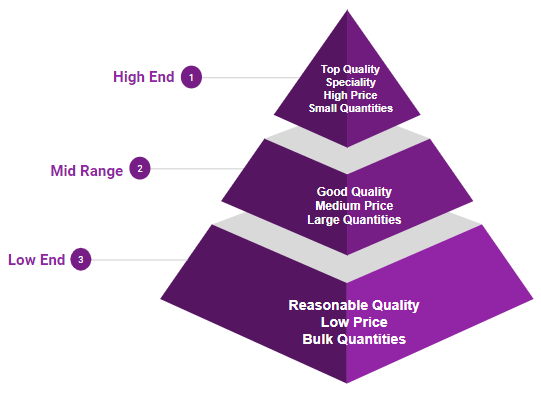Guide on Exporting to Europe [Part 2]

In the previous article, we’ve gone through the first 3 steps of why you need to export your products to the European market, the tools that can help you to determine the market trends and tips to get your company ready for exporting to Europe. Let’s continue with the steps of exporting to Europe today!
Step 4: How does export to Europe work?
Exporting to Europe means exporting to more than one country with all their differences in culture, language and preferences. However, exporting to European countries have several practical similarities in terms of legal import requirements and border control.
These are the 27 European countries members of the European Union:
• Austria • Belgium • Bulgaria • Croatia • Cyprus • Czech Republic • Denmark • Estonia • Finland • France • Germany • Greece • Hungary • Ireland • Italy • Latvia • Lithuania • Luxembourg • Malta • Netherlands • Poland • Portugal • Romania • Slovakia • Slovenia • Spain • Sweden
These four European countries are not EU members, but take part in the European Free Trade Association (EFTA):
• Norway • Switzerland • Iceland • Liechtenstein
For you, as an exporter, once your products enter the single market in Europe, you’ll have access to all countries without going through additional customs procedures to move from one EU country to another.
But, of course, for goods to enter the European single market and move freely around it, they must meet requirements by coordinated European Union Members by common European legislation.
Be patient. It’s not an instant coffee thing. Sit down, learn and plan.
Step 5: Do your products meet the requirements?
Before offering your products to your buyers in the European market, your product must meet European requirements. Some requirements are established by law, so your product will not be allowed to enter the European market if it doesn’t meet the legal requirements. There is a possibility that your product can be rejected when checked at a European border, which would cost you money and damage your reputation with buyers.
Here are the four types of legislation set for products marketed in Europe:
1. Framework legislation. For food products, for example, you must follow the General Food Law, which is to ensure that all food marketed in the European Union must be safe.
2. Legislation restricting substances such as chemicals and contaminants. This legislation sets limits in the form of substances that can be used in certain products, such as preservatives in cosmetics.
3. Legislation on CE-marking, applicable to toys and electronic equipment, medical devices and a few other product groups.
4. Product-specific legislation is set for a few, specific products. This legislation mainly deals with marketing requirements, like setting standards for selling a product under a certain name, for example, chocolate.
Make sure that you establish your product to meet legal requirements, and modify your product. Also, you may need to find out do they require additional certifications? In many industrial sectors, for example, ISO 9001 is a must-have.
Step 6: In which market segment do your products fit?
You need to identify where your product fits to know in which segments of buyers you should be targeting. Different segments have different product preference such as price and quality, but also volumes, colors, flavors, trends, and anything else that may be relevant in your productions.
A typical market divided by in three segments according to price and quality looks like the following :

Here are some of the tips for getting the right segment for your product.
- First, find products similar to yours on offer in your target country online. This will give you information on the price range and a general indication of quality.
- Identify your current customer and draw up a profile based on indicators, such as demographics, that is, age, gender, households, etc. This will give you a starting point for identifying segments in the European market.
Every country is different. Some countries like subtler colours, other flashier styles. You have to realise that even if your product is great, it needs to go to the right market.
To recap...
As long as your products are able to enter the single market in Europe, you’ll have a “free pass” to access to all countries without going through additional customs procedures. Next, you need to understand all the rules and regulations in order to avoid your product being rejected by the custom of Europe. Lastly, research is needed so that you can put the right products into the right market segment.
Next article we will be continuing with the channel that can help you to connect with European buyers, how to find your buyers and ways to attract buyers to your products.
Follow our social media to get the full 12 steps of the guide to export to Europe!

